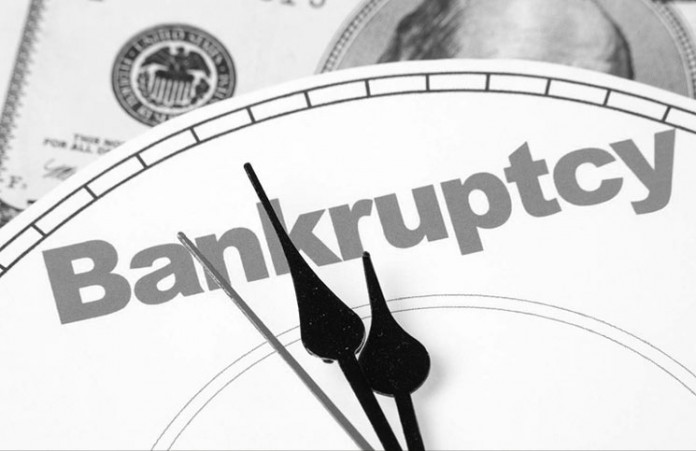This post is written by Anumeha Karnatak, a student of National Law School of India University, Bangalore during her internship with iPleaders, on personal bankruptcy or insolvency laws in India.
PERSONAL BANKRUPTCY IN INDIA
“ Being broke is temporary, but being poor is eternal.”
-Rich dad poor dad
In India, there are two statutes dealing with personal insolvency (including proprietorships and partnerships). One is Presidency Towns Insolvency Act, 1909, applicable to the erstwhile presidency towns of Bombay, Calcutta and Madras. The other one is Provincial Insolvency Act, 1920, applicable to the rest of India. The district court has the jurisdiction to try cases pertaining to insolvency under the Act. When an order of insolvency is passed, all personal properties of the individual are vested in the Official Assignee appointed by the government of India, who then realizes it and allocates it among the creditors of the insolvent. An insolvent person is barred from enjoying several civil rights. Further, criminal proceedings can also be initiated against the insolvent. In Bharath N Mehta v. Mansi Finance Ltd, the court opined that the criminal proceedings inititated against the insolvent under certain provision of the Negotiable Instruments Act cannot be stayed even if the same debt formed the basis of a civil proceeding initiated under any of the aforementioned Acts. In India, a creditor can institute insolvency proceedings against the debtor by filing an insolvency petition in any competent court. Following are the conditions, as laid down in Shivchandra v. Swarna Silk House that must be satisfied by the creditor:
• That he is a creditor of the debtor.
• There exists a legally enforceable ascertained debt between the debtor and the creditor.
• That the debtor has committed an act of insolvency as suggest under the Act.
Also, under the Act, any person competent to enter into a contract can be declared as insolvent.

A concept slightly different from insolvency in bankruptcy which is very popular in the western countries. A bankruptcy is when a person voluntary declares himself as an insolvent and goes to the court. On declaring the person as ‘bankrupt’, the court is responsible to liquidate the personal property of the insolvent and distribute it among the creditors of the insolvent. This process is rather amicable which seeks to avoid the threatening calls and gestures of the creditors. It provides a fresh lease of life to the insolvent. However, declaration of personal bankruptcy also has its own disadvantages. Following are some prominent ones:
• Societal stigma is faced by the insolvent. In India, bankruptcy or insolvency is considered as extremely demeaning. People hesitate in declaring bankruptcy because of the fear of being ostracized by the society.
• The insolvent person lose credibility in the eyes of future creditors. His repaying capabilities are often questioned and he develops the image of a defaulter. He remains on the CIBIL list for 10 years during which it becomes almost impossible for him to take loans.
• In India, the whole process is time-consuming because of slow functioning of the courts. As per the World Bank data the time to resolve insolvency in India in years is 4.3.
Aforementioned are some of the reasons why people filing for personal bankruptcy are lesser in number here than in the US where 1.59 million people filed for bankruptcy in the year 2010. Since the global slowdown of 2008, the number of people filing for bankruptcy in the US has increased manifold. The figure rose from 8,01,840 in 2007 to 1.06 million in 2008.
Further, the Indian laws dealing with personal bankruptcy are largely inadequate and outdated. People still continue to adopt traditional out-of-court settlement methods which are less time consuming such as waiving the interest on loan or restructuring it or settling with partial payment. The country has witnessed an overhaul in the number of personal loans taken by individuals to finance education, housing, marriage etc. in recent times. Credit card users have also increased. Thus what we need today is a more comprehensive and up-to-date legislation to deal with bankruptcy cases in India.
LawSikho has created a telegram group for exchanging legal knowledge, referrals and various opportunities. You can click on this link and join:
https://t.me/joinchat/J_











what are consequenses that an individual is decleared insolvent to himself.
If a person declares himself insolvent.. What will be the status of any ancestral property in the name of his father..and the house which he is living in is under mortgage loan and is in the name of his mother.. Whether the above said properties will also b attached
Will you me the ref. of any person around Pune who practise on Insolvency Act.
Regards,
Satish.
Hi, are there any special provisions for senior citizens filing for insolvency/bankruptcy in India? Especially when they have no attachable property, etc.? What are the conditions when a criminal proceeding can be initiated against them? What is the extent of liability of their offsprings in this case if at all?
We will write an entire article on this.
Can you give me the link to this article pls.
Thanks